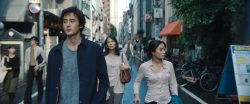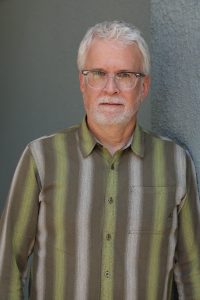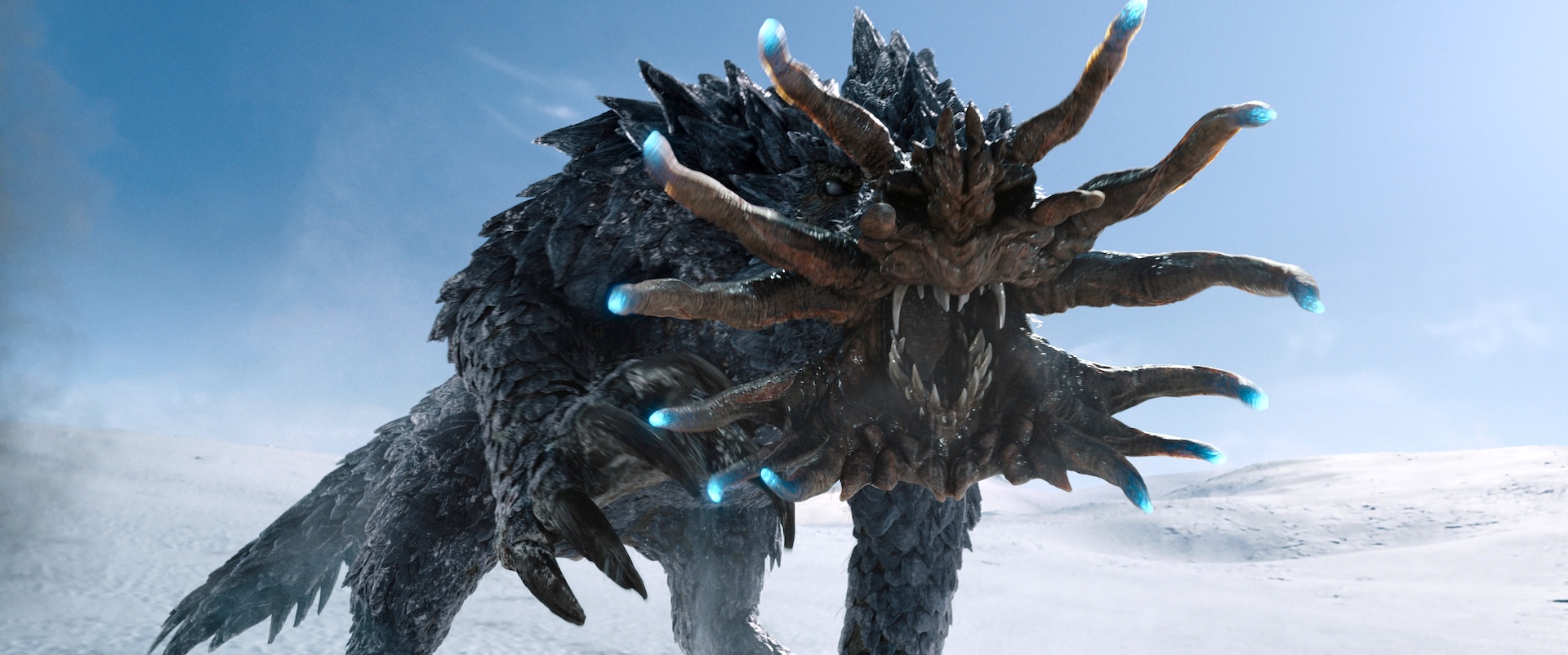The MonsterVerse comprising Godzilla, King Kong and the Titans was originally created by Toho Company in Japan. The monsters were inspired by fears caused by the destructive actions of humans and serve as cautionary tales for us to preserve our environment and our humanity before it’s too late. The next chapter in the saga is told in a compelling television series called Monarch: Legacy of Monsters.
Set across two intercutting timelines – 1950s and 2015, Monarch tracks two siblings Cate and Kenturo Randa who anxiously follow the clues to locate their missing father Hiroshi and his links to the nebulous government organization called Monarch. Starring Kurt and Wyatt Russell as the older and younger Lieutenant Lee Shaw respectively, Anna Suwai as Cate, Ren Watabe as Kenturo, and Takehiro Hira as Hiroshi, Monarch is a mysterious, anxiety-laden snapshot of the uneasy world where conspiracies and secrets rule our lives.
Showrunners Chris Black (Severance, Invincible) and Matt Fraction (Casanova, Da Vinci’s Demons) shared their insights with Creative Screenwriting Magazine about their intentions for this ambitious project.
Why Is The MonsterVerse So Enduring?
Says Matt Fraction of the franchise, “I think like so many great, iconic, and enduring science fiction or horror arenas, it allows for such allegorical imprinting.” Sure Godzilla is a monster, but what does he and his actions represent? “Is it about climate change? Is it about fear and paranoia? Is it about post traumatic stress? Is it about abandonment and abuse?” Many of these issues were amplified after World War II and persist today. “I think there’s there’s a power and a potency in the metaphor of Godzilla and the Titans. We can see our own nightmares in it. We can see our biggest fears and our biggest failings, and some cases, some of our successes,” continues Fraction. He describes the MonsterVerse as “Rod Serling-esque. It’s not really about monsters on Maple Drive.”
Our fears and anxieties have remained constant over the decades, especially about the role of governments encroaching on our lives. “I think what makes the monsters enduring is that this franchise goes back almost seventy years to the early 1950s and the way these creatures were portrayed in each generation, each decade, is reflective of the fear or threat of the time,” explains Chris Black.
The destruction of the atomic bomb was unleashed in Japan during World War II and its aftermath felt decades afterwards.
The 1950s signalled the early days of the Cold War and the atomic age against the backdrop of secret government conspiracies. “Once you get into the 60s, many movies are reflective of gangster or spy movies. And then you get into the 70s and they’re very much about environmental degradation and preserving our planet,” continues Black.

Kentaro Randa (Ren Watabe), Emiko Randa (Qyoko Kudo) and (Cate Randa) Anna Sawai. Photo courtesy of Apple TV+.
Nuclear dinosaurs and other scary creatures are also fun and entertaining. “We grew up seeing them on late night television in black and white movies, suspended from wires, or actors in suits, kicking over these incredibly detailed models of cities, train stations and sinking ships. It was captivating,” elaborates Black.
Monsters are designed to be scary, but not always villainous. Oftentimes, they’re simply misunderstood when humans believe their actions are meant to harm us rather than save us from themselves.
Notably, not all monsters are creatures, some can be human too.
Japanese Monsters For Global Audiences
Both Black and Fraction consider these monsters as universally-relatable characters. “King Kong is a love story and he’s an endearing character,” says Matt. “What makes the original Toho monsters memorable is that they have stories and motivations, they have histories, they have personalities, they have quirks, and they sometimes have relationships with the human characters,” adds Chris.

Matt Fraction. Photo by Ricardo Mestre
Matt Fraction also notes, “When the legends of Godzilla and the Titans were conceived, it really came from a fairly closed cultural standpoint, the Japanese community. At that point, there was no mass immigration so we considered how that specific lens of the originator may be parlayed or needed to be translated for more Western audiences.”
“I don’t have any insight nor would it be appropriate for me to try look to the cultural origins of the people who created these creatures. I wasn’t aware of the larger allegorical implications of these characters,” concedes Chris.
Despite their origins, there is both a universality and uniqueness to the fears, threats, and anxieties evoked by these monsters.
Creating Monarch: Legacy Of Monsters
Unlike its predecessors, Monarch: Legacy Of The Monsters doesn’t feature a relentless stream of monsters. “We had no interest in trying to replicate the theatrical experience of the MonsterVerse films in ten episodic instalments,” declares Fraction. Rather, they focused on the characters. “We were always telling the story about these characters discovering that their father had a secret life that connects them to that world. That gave us an opportunity to explore that world and its implications.”
The series intercuts to the early 2000s in each episode to depict two parallel worlds. “It’s not a 9-11 show, it’s a 9-12 show. It’s about the world the first time you have to take your shoes and your belt off to get on an airplane,” states Fraction. “In the movies, buildings fall down. In our show, it’s the people that get up. That’s a compelling character journey.”
Black and Fraction discovered the joy in the world-building by referencing the monsters via scenes such as the Godzilla evacuation signs at the airport and the Armageddon energy drinks. Despite the nods to the MonsterVerse, they always wanted Monarch to be a “ground level story.”
“You’re inside Monarch. You’re in the war room. You’re in the secret underground or underwater base. You’re privy to everything that’s going to go on – all the war plans. We wanted to tell the story from the people who were standing on the street and don’t know what’s going on. They don’t know who these people are and feel like there is a secret underground. We wanted to tell the story about a government agency that’s not been sanctioned to protect them,” elaborates Black.
Fine-Tuning The Story
“My philosophy has always been to keep the storyline as clean and uncluttered as possible,” declares Black. “That doesn’t mean it should be simplistic or that you’re trying to spoon feed the audience to make it easily digestible. I think good television is challenging. I think good television forces the audience to ask questions and I’m never afraid if the audience is a little confused. They’ll catch up. They’re smart.”
The big question Monarch: Legacy Of Monsters asks, is how safe we are from monsters regardless of what form they take? This is depicted in the opening scenes of the series when Cate Randa first arrives in Tokyo. “You see the Godzilla evacuation routes, she gets into the cab, and as she drives into the city, you see the anti aircraft missile set up and you have a cab driver who doesn’t believe any of it is real. You see a warning siren go off and that there is a plan for people to go into the subways and shelter in place in case of an attack,” expands Black.

Chris Black. Photo by Ricardo Mestre
“The more important and more interesting story is how this family is discovering the secrets of its past. It starts out with a revelation in the pilot episode where these siblings Cate and Kentaro Randa discover each other and discover that their father Hiroshi was keeping secrets from them, not only about their family life, but also about who he was working for, what he was doing, what knowledge he may or may not have had about the existence of these monsters, and the potential dangers that they face. So, it is really their quest to have these questions answered,” continues Black.
The writers broke stories to keep the show fun and moving forward while embracing the “monsterness” of it. They kept track of Hiroshi’s whereabouts at the foot of every episode in the writers’ room. Each episode was driven by the pursuit of answers. “Where’s Dad? Why did he lie to us? Where did he go? Why did he abandon us? Why won’t he call us? What did he know? What did he not know” says Black.
“What we want the audience to discover in the final revelation at the end of the pilot episode is that Cate’s monster is not Godzilla. Cate’s monster is her father Hiroshi. You think she suffered this trauma and survived it from seeing this monster destroy her city and take out people that she loved and cared about. But that’s not the deepest trauma that she’s suffering. That’s the trauma that she suffered at the hands of her father,” states Black.
Aside from capturing the zeitgeist of the times, Monarch had to explore its MonsterVerse origins. “We were gifted with this timeline of events from the films that had big spaces between them. There’s a little footage in the Gareth Edwards Godzilla film from 2014, where you see what’s happening on Bikini Atoll. You know they’re going to detonate the bomb. And then you’ve got Kong Skull Island, which is in 1973,” says Matt.
“So, as storytellers, we had a timeline with a couple of beads on it. And in the writing and the telling of the backstory, it let us complicate the story of the presence, because sometimes we would be front-footing the audience and other times back-footing them,” he continues.
“You can make chronology work as a narrative device that builds tension rather than just lays out answers at a convenient moment. This let us focus on the Monarch as being monolithic, omnipresent and all-powerful,” says Matt.
Says Matt, “I love the idea of making a Godzilla show, the monster show that you couldn’t just have on in the background. The films request a little bit of your time and attention. In Monarch, there is a puzzle and a mystery to unravel as much for our characters as for the audience, that is hopefully intellectually engaging.”
“We’re trying to invite our audience to be co-collaborators and co-conspirators with us and try to solve it and figure it out and puzzle it together as our characters do,” concludes Fraction.
